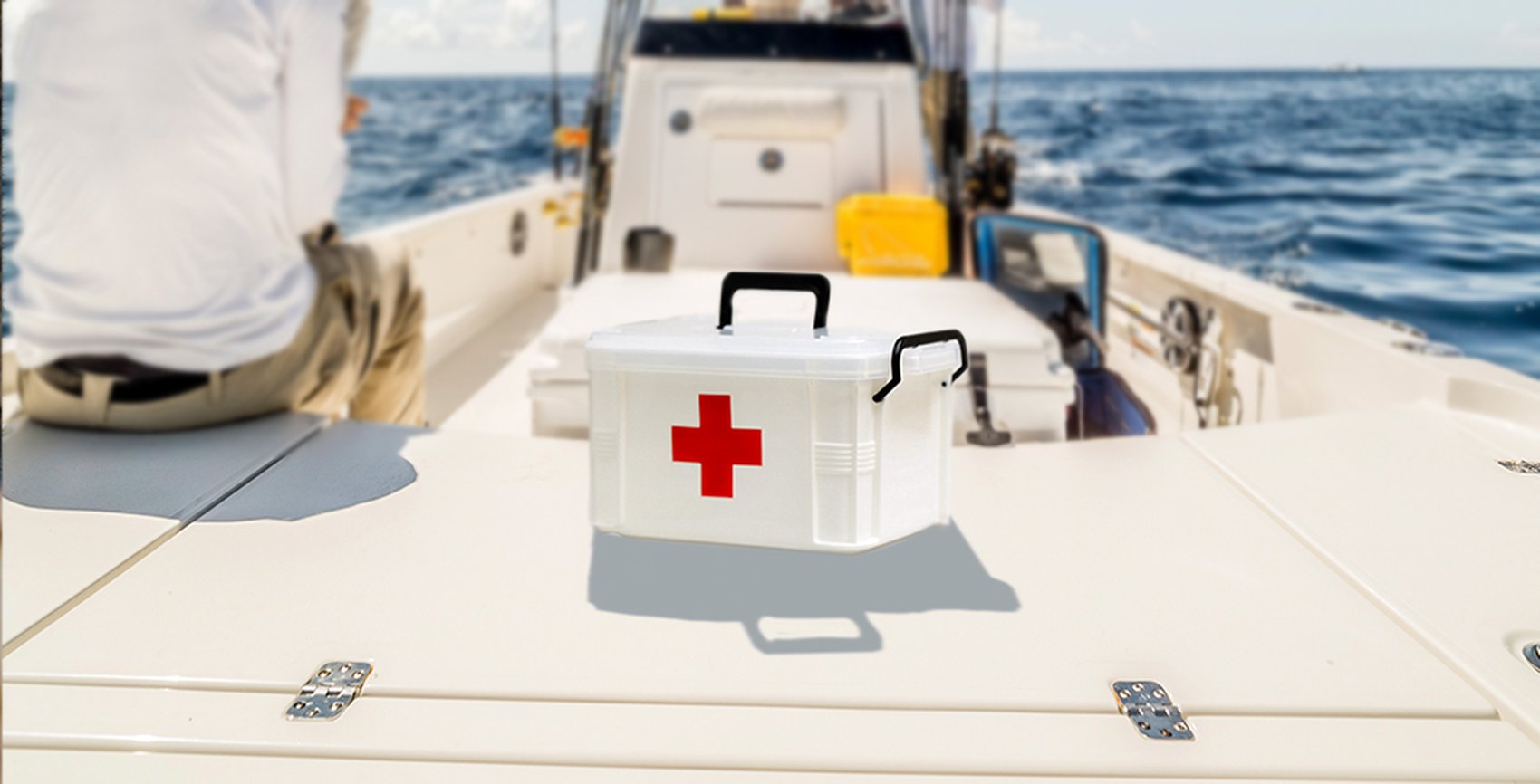
How to deal with a medical emergency on the water
Whether the emergency is on your vessel or you’ve entered the scene subsequently, there’s precious little time to react.

A casual Sunday afternoon cruise along the coast is the perfect way to unwind after a long week. But what happens when your plans are disrupted by a very unexpected medical emergency on the boat or in the water? Whether the emergency is on your vessel or you’ve entered the scene subsequently, there’s precious little time to react.
For all medical emergencies, there are three overarching tools to put into practice: knowledge, tools, and access. Here’s how you should prepare for a medical issue that arises offshore.
Be certified in First Aid
Emergencies can range from an allergic reaction or dehydration to a heart attack or severe injury. There’s no telling what you might encounter, so it’s imperative that you have the skills to think critically in addressing whatever you come upon. Those skills are learned in First Aid courses.
Learn how to identify symptoms of heat stroke, heart attack, and anaphylaxis, and the life-saving skills required to keep your subject as healthy as possible until professional medical help is available. With a Red Cross First Aid course, you’ll also learn to triage injuries and treat minor issues like cuts or burns, and stabilize your patient if a serious injury occurs.
With First Aid, practice makes perfect. Refresh your certification as required to maintain your skills so you can respond quickly and calmly.
Carry essential safety equipment
An absolute must aboard your vessel is a well-equipped First Aid kit. That should include common materials such as bandages, dressings, cotton gauze pads, scissors, tape, tweezers, a tourniquet, ointment, aspirin, a First Aid guide, and an emergency blanket.
But remember that other items can be used as safety equipment also. Oars can be used as a makeshift backboard, for example. Your boat has solutions built in all around you. A buoy or fishing marker tossed in the water can mark the spot where someone accidentally fell overboard.
Contact emergency services
In a medical emergency, a positive outcome often relies upon swift response from professionals. To ensure expediency, always equip your boat with contact information for local EMS services. In Europe, 112 is the emergency number for most situations while in UK it’s 999. If matters are less urgent, you should also have contact information for the police, fire department, and hospital.
An excellent location to secure this list of numbers is on the door of a glove box or storage bin, and make sure everyone onboard knows where it is.

How 1st Mate helps
Things happen very quickly when a medical emergency occurs, and preparedness is crucial. Equipping your boat with 1st Mate can help you navigate tricky emergencies for the best results.
The 1st Mate system is equipped with a button that can send a distress signal to the authorities. At a time when all hands on deck are dealing with the emergency, there might not be time to search for a phone or try to find cellular service. Or if the captain goes overboard, a MOB (man overboard) alarm is included with 1st Mate that will shut down the engine and send a GPS location to a designated contact. Passengers will receive instructions from 1st Mate helping them navigate the vessel back to the captain to assist.
To be as prepared as possible for any situation, install the 1st Mate system from Mercury Marine. Contact a dealer today to arrange for your installation.














